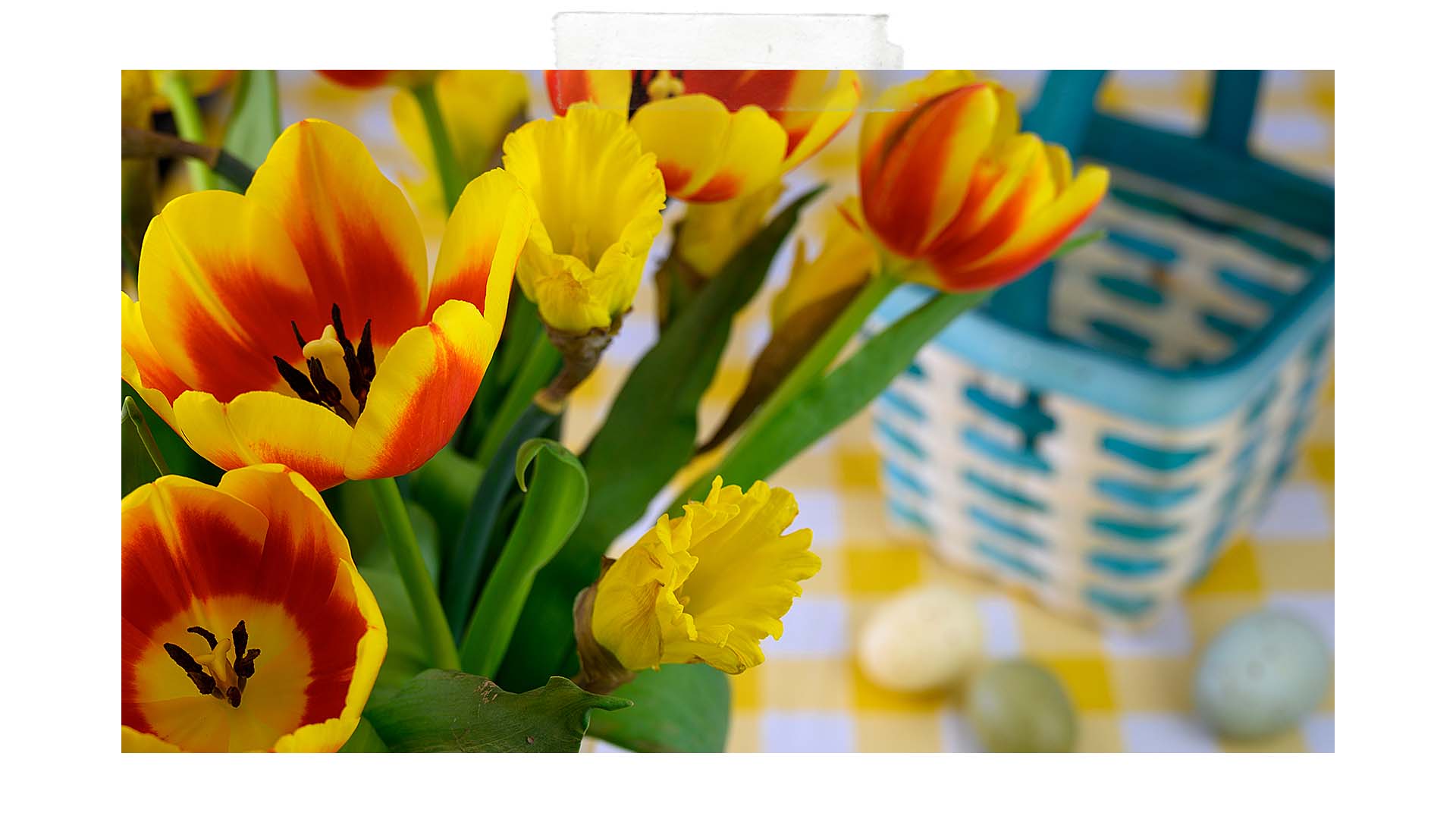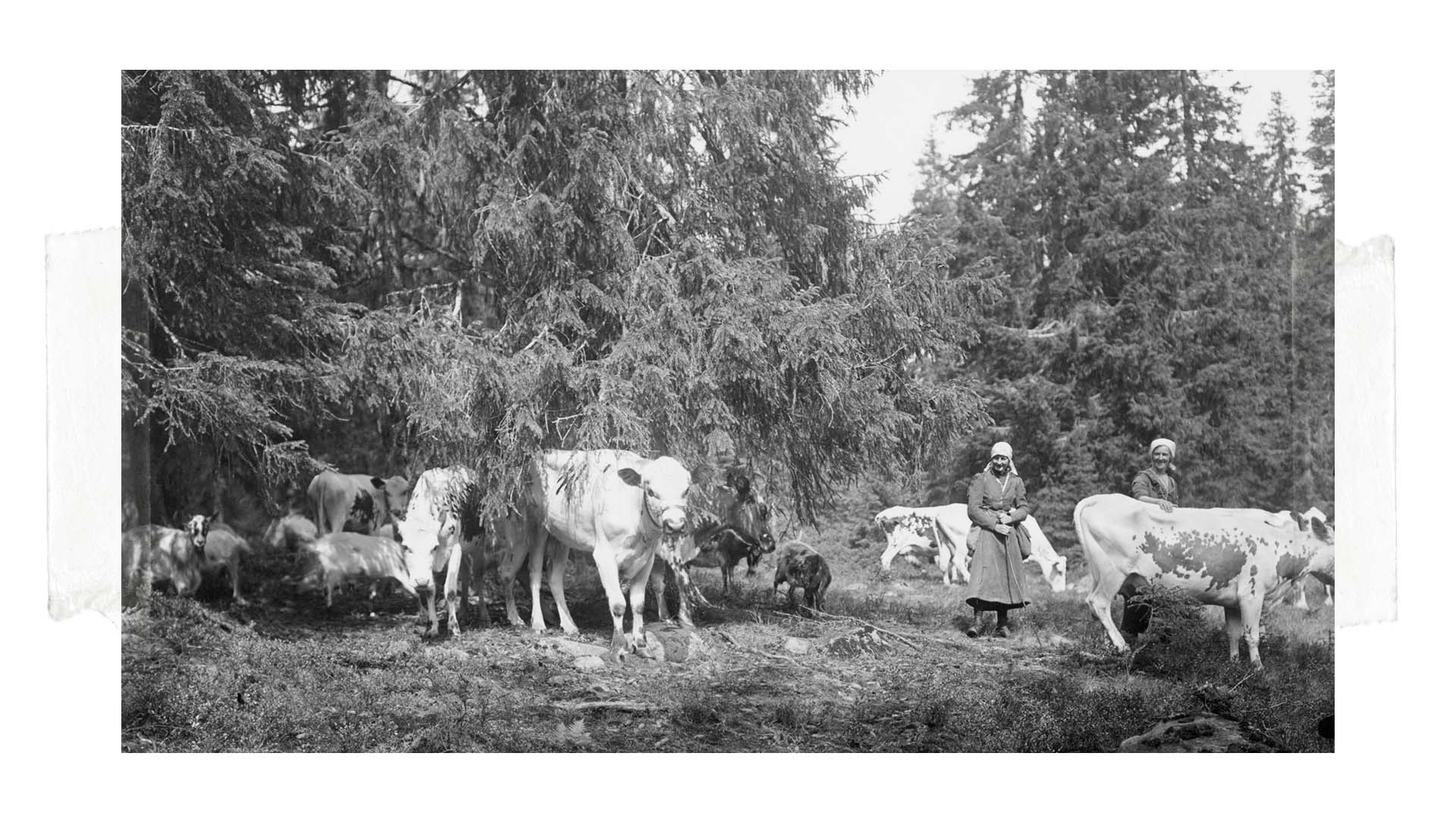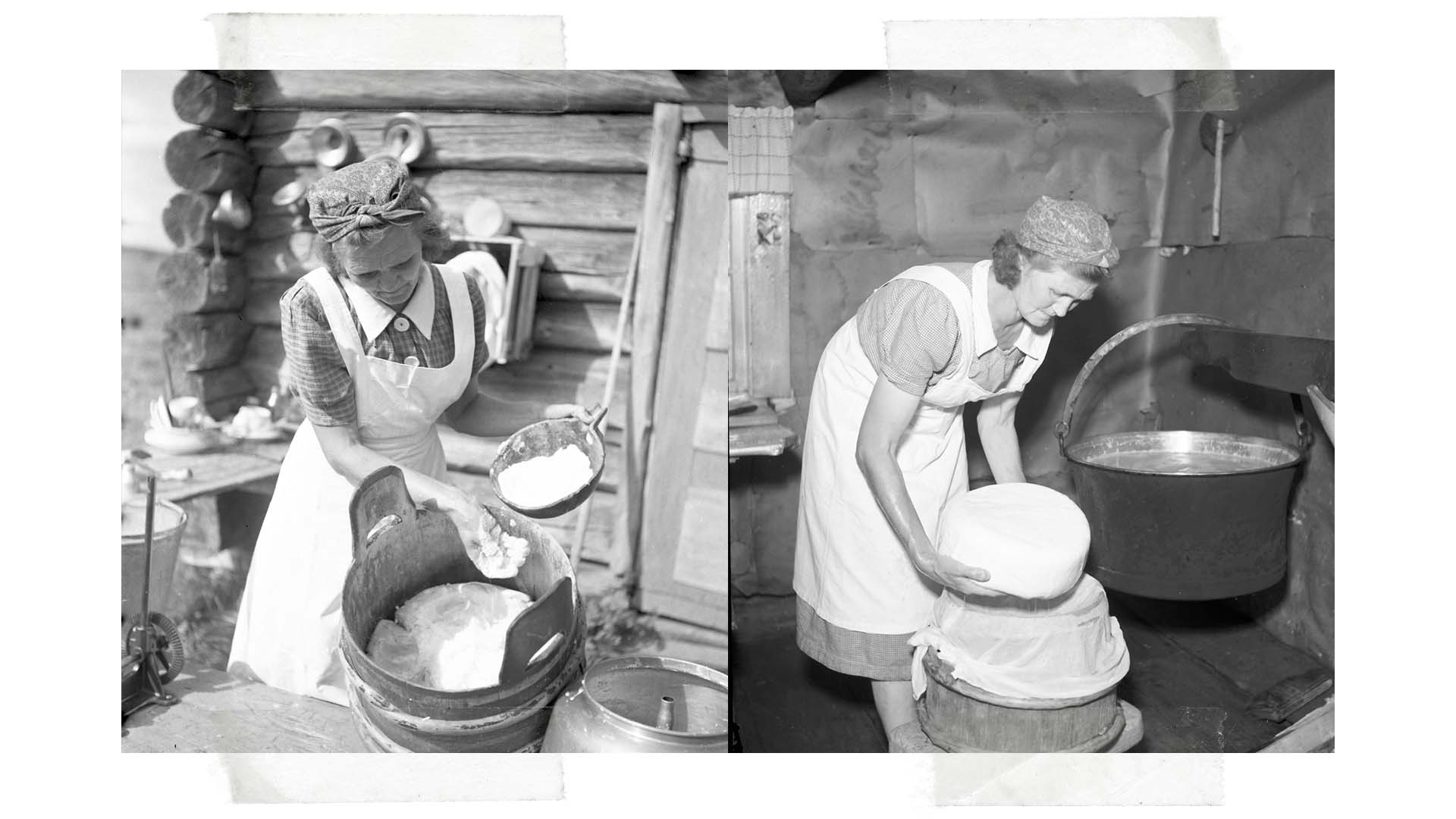A Different Kind of Easter

This Easter I’ll present a unique selection of dishes, which are part of a local cuisine from the Swedish county of Jämtland, referred to as fäbodmat.
For obvious reasons that you will learn about below, this is normally served in the summertime, but for some odd reason I started making it for Easter since we moved to California.
The knowledge of how to make these dishes is getting lost, since the older generations who used to make them is almost gone. Even though younger people enjoy eating them when they are offered, which is usually at local summer celebrations and festivals, few have access to the original recipes.
What is fäbodmat?

Photo: Renström, Georg / Nordiska museet
In Sweden and Norway, like many other places in the world, farmers used to practice seasonal transhumance. In Jämtland, it meant that the villagers moved all the livestock to a common fäbod or fäbodar (meaning building or buildings for animals), a summer pasture located in the forest or on a mountain, so that the farmers could preserve the meadows and produce hay for the winter. The livestock was then returned to the farm in the fall, when the grazing was exhausted and temperatures were falling.

Photo: Renström, Georg / Nordiska museet
The animals were tended by young women, who’s job it was to milk and make cheese to take back to the farms. My grandmother Greta was such a woman and that’s how she met my grandfather, who like many young village men used to visit the girls at the fäbod when time allowed. If you want to read more about the life at the fäbod, read this article from the Swedish magazine Land.

Photo: Hernried, Karl Heinz / Nordiska museet
With such generous access to milk at the fäbod, a dairy-based cuisine developed called fäbodmat.
A staple in this cuisine is Kams, which is a dough-based dish with many local variations. In Ragunda, the beautiful municipality where my family comes from, they comprise of thin barley cakes poached in whey.
Kams is served with fresh dairy products, including Färskost (Fresh Cheese), Sötost (Sweet Cheese from Ragunda), Messmör (Swedish Whey Butter) and butter. And the drink served with this amazing meal is of course fresh, cold milk!
For dessert? More milk, in the form of solidified milk called Kesfil / Flygin (meaning “to fly in” and refers to the slippery, jelly-like consistency that simply melts in the mouth). This milk “pudding” is served ice-cold with half-and-half or whipped cream and sprinkled with sugar and cinnamon. Absolutely perfect for a hot summer’s day!
I added a bonus recipe in case you end up with some fresh cheese or milk left over, and that’s Ostkaka (Swedish Cheesecake), a creamy, almond-scented cheese curd-based pudding that is served lukewarm with whipped cream and jam.
Finally, I want to apologize for the slower publishing pace this past year. And I know there are some slideshows missing and they will be added, I promise. I have unfortunately had some health issues to deal with and they will continue for some time. So I will continue to add to the recipe collection when, and if, I have the energy to do so.
Please continue to sample and enjoy the recipes that are already here and share your favorites with friends.
All the best, Therese
